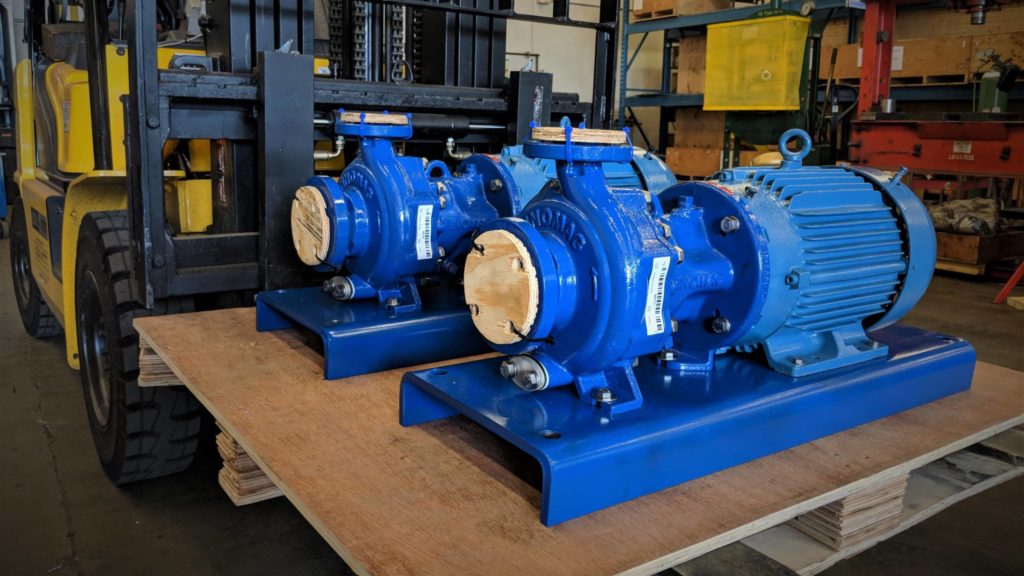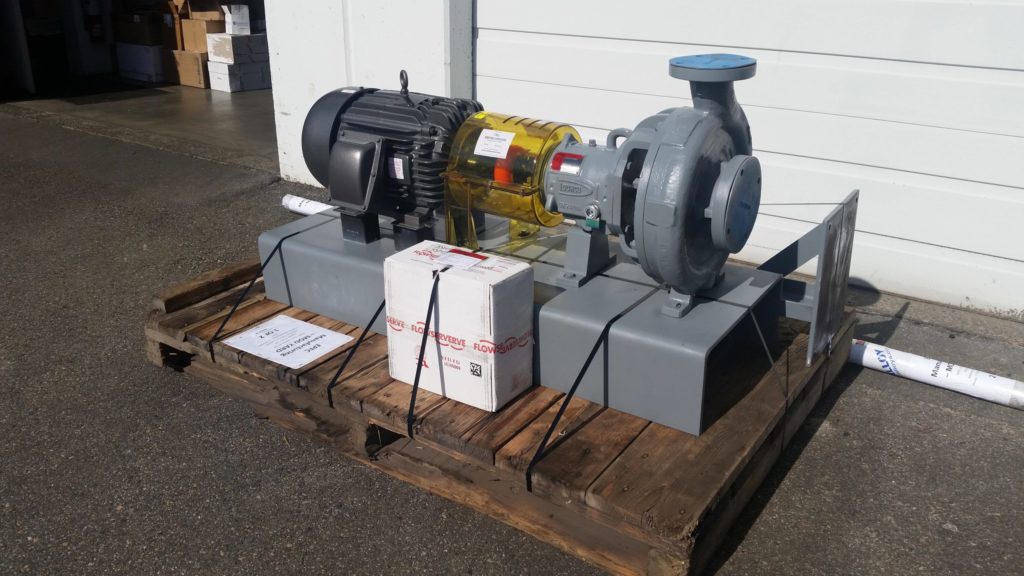Having the right pump for your application makes all the difference. Our applications engineers will take the time to make sure that you have the proper hydraulic and material selections to configure a pump specifically for your application. As one of the largest pump distributors in Canada, we have significant experience working with a wide variety of industries, including chemical processing, mining, ore processing, pulp & paper, water & wastewater treatment. From chemical metering pumps to large centrifugal pumps, we have helped thousands of customers, and we have your hydraulics covered.
Working with Centrifugal Pumps
Regardless of size, all centrifugal pumps operate on a known performance curve, also referred to as a pump curve. The key to proper selection is understanding the properties of the liquid being pumped and the process environment including upstream and downstream piping, valves, etc., which directly impact pump performance. The development of a system curve is a tool we use to graphically illustrate the hydraulics of the system.
Once we have established the system curve and confirmed the suction conditions of the system, we start the pump selection process. The interaction of the system curve with the pump curve will determine the operating point. The ability to understand the relationships and consequences of pump operation points and how they relate to performance helps to ensure successful, long-term operation.
Pump Curve Elements

Flow and head: This is the performance curve of the pump. At any given flow, you can predict the head produced at that flow. But wait, it’s not quite that simple. Depending on where your points intersect on the curve, it will predict the overall reliability of the pump over its lifetime.
Impeller trim: Each pump will have a range of trims available from max trim to min trim and they will be different for each type of pump. The trim does not affect the flow but is directly related to how much head the pump will produce. Selecting the appropriate trim to match your system curve enables you to “optimize” the performance curve in a predictable way and get the best reliability.
Horsepower: This is the power required to do the work required by the pump. It is important to select a large enough motor to cover the entire hydraulic range of the performance curve.
Net Positive Suction Head Requirement (NPSHr): NPSHr is very important for proper pump operation. This is the minimum amount of head pressure on the suction side of the pump required to replace the liquid being pumped. The higher the flow rate, the higher the NPSHr. If you don’t have enough NPSHr you are starving the pump and it will not achieve the desired performance causing cavitation, vibration and premature failure.
Efficiency: Pump efficiency is an important factor to consider when selecting the best pump for an application. When you select the point on a curve where efficiency is at it’s highest, it called the Best Efficiency Point (BEP), where the power going into the pump is the closest to the power coming out. This will also be the point where the pump shaft experiences the least amount of vibration. The further away you operate from the pump BEP, the lower your reliability as the pump can experience a range of problems from cavitation, recirculation, seal failure, bearing failures, vibration and excess heat build up.
Minimum Continuous Stable Flow (MCSF): This is the minimum allowable flow rate for the pump. Below this flow rate, vibration limits are exceeded, and the pump cannot run reliably. If your pump is designed to operate within a range of flows, the lower range must be higher then the MCSF.
Pump Set-Up Best Practices


Once you select the correct pump for your application based on the pump curve, there are several best practices to designing an environment around the pump to help ensure efficient and long-term operation.
- Keep the pump curve at the station with the system head plotted.
- Track pump operational data in a journal as well as any process upsets or changes.
- Monitor for any changes to pump vibration and take detailed notes in a journal.
- Suction and discharge side pressure gauges to monitor what is happening inside the pump.
- Suction and discharge isolation valves to allow for easy maintenance and isolation.
- Monitor motor amperage draw as it is an indication of how the pump is running over time and can be helpful for troubleshooting.
- Flow meter to confirm actual flow.
Questions and Answers
Q: Do pump curves vary from vendor to vendor?
Yes and No. Each manufacturer may present the same information in a slightly different way. Every pump will have its own specific curve.
Q: Is their just one pump curve or do they get more complicated?
Each pump will have its own curve specific to that pump only. All pertinent information should be included.
Q: How do you calculate the pump curve if you are operating pumps in series?
Pumps in series add both head and flow. You need the system curve to understand how the pumps will interact.
Q: What is the difference between NPSHR and NPSHA?
NPSHr is the Net Positive Suction Head Required by the pump to perform the work. NPSHa is the Net Positive Suction Head Available. Your NPSHa must always be greater then your NPSHr.
Q: Can the material of an impeller impact the pump curve?
No it will not. Materials will affect wear and reliability and how the pump performs over time.
Q: What are the implications of incorrect pump operation?
Lower reliably causing higher frequency of services and increased maintenance costs.
Q: What are the implications if the pump operates to the left of the BEP curve?
The further to the left of BEP you operate the less reliable the pump will be. Cavitation, recirculation, vibration, seal failure, increased loads causing bearing failure.
Q: What are the implications if the pump operates to the right of the BEP curve?
The further to the right of the BEP at which the pump operates will result in higher flow rates, increased horsepower demands, low pressure cavitation and high radial loads / shaft deflection and vibration.
Q: What is cavitation and how does it impact pump operation?
Cavitation is the instantaneous formation of gas bubbles and their immediate collapse. This violent process can severally damage impellers and leads to lower performance. A tell tail sign of cavitation is that your water pump sounds like it’s pumping rocks.
